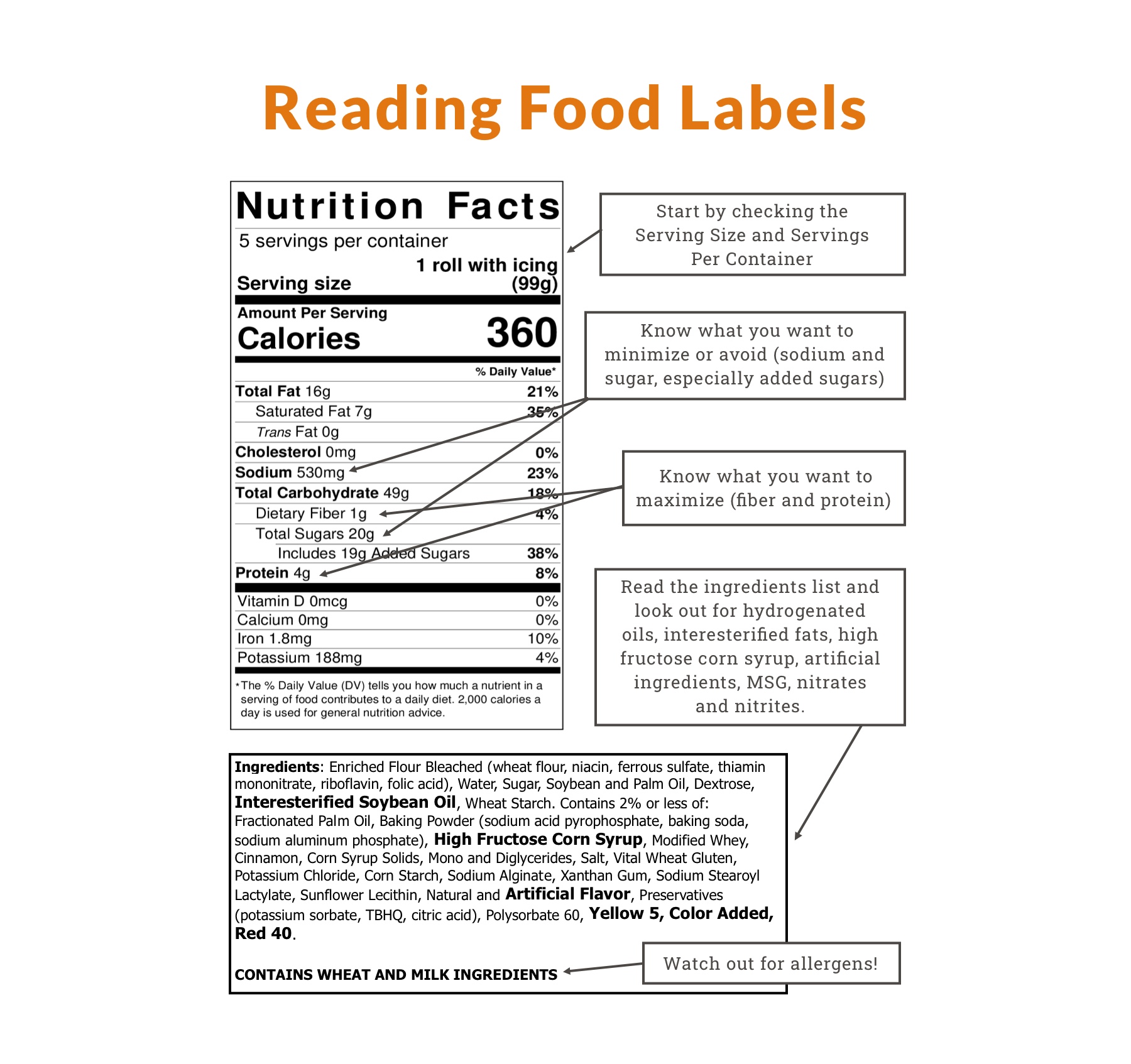


Sign-up for {N}power to get exclusive discounts, newsletters, members-only features, and more!

Navigating the supermarket can be a daunting task when you are committed to eating healthily. Distinguishing between what is really in a product and what the manufacturer wants you to believe about the product can take some serious detective work. Luckily, with a little knowledge, it is possible to make healthy choices. Keep the following steps in mind next time you venture into your local grocery for truly healthy shopping:
Remember that eating whole, real foods is always the goal with any healthy diet. This means eating foods as close to the way they came from nature as possible. For example:
Eating whole foods eliminates the need to read food labels. It is unnecessary for fresh produce, whole grains, beans, raw nuts and seeds, and unprocessed meat to have ingredient labels. Focusing mostly on these foods ensures that you are getting the healthiest food possible.
When you choose any packaged food, you must always turn the package around to the Nutrition Facts Panel. This panel, and the ingredient list below it, tells you what is actually in the product. If you rely only on the front of the package, you see what the manufacturer wants you to see to entice you to buy their product. Statements such as “lite”, “natural”, “low-fat” and “wholesome” have no legal limitations on their use and usually tell us very little about the product.
Label claims that actually mean something…
Labeling claims that might mean something…
Unfortunately, there are several terms used that are unregulated and their interpretation is often left up to the manufacturer, leaving the consumer unsure. The following terms generally imply a certain level of quality, but to know for sure, it is probably best to call the manufacturer directly. If the manufacturer is unable to give you satisfactory answers, try another brand!
Completely avoid products containing some of the most dangerous ingredients. These ingredients are a red flag warning that the product is highly processed junk food. These ingredients are…
Partially hydrogenated oils (These oils may be corn, soy, cottonseed, etc.). These are the source of the dreaded artificial trans fats, known to increase the risk of cardiovascular disease. In 2015, the FDA rescinded partially hydrogenated oils’ Generally Recognized as Safe (GRAS) status and as of this writing manufacturers should no longer be using partially hydrogenated oils.
Interesterified fats (a.k.a. “interesterified soybean oil”, “interesterified vegetable oil”, “fully hydrogenated oil”, “high in stearic acid” or “stearate-rich”). These fats are relatively new to the market and are found in many of the same types of foods trans-fats used to be found in. Healthwise, they interfere with fat metabolism and negatively affect cholesterol levels like a trans fat, but in addition they raise fasting blood sugar levels, which could lead to a prediabetic condition.
High Fructose Corn Syrup. A sweetener, usually made from corn, it alters our taste buds and brain to crave sweeter foods. Additionally, it affects our ability to regulate appetite, leading to an increased desire to eat. To top it all off, it has a very pronounced effect on blood sugar, which over time can lead to prediabetes and diabetes.
Some additional red flag ingredients to be on the lookout for…
At Natural Grocers we think eating healthily shouldn’t have to be difficult and we’ve carefully evaluated the ingredients of each product we carry. You can find our extensive list of dangerous ingredients we won’t carry and why. But bear in mind, that even at a store with standards as high as ours, you are still better off building your diet mostly around unprocessed, whole, real foods like fresh fruits and vegetables, dairy, bulk products like whole grains and nuts, meats, and healthy fats.




Sign-up for {N}power to get exclusive discounts, newsletters, members-only features, and more!